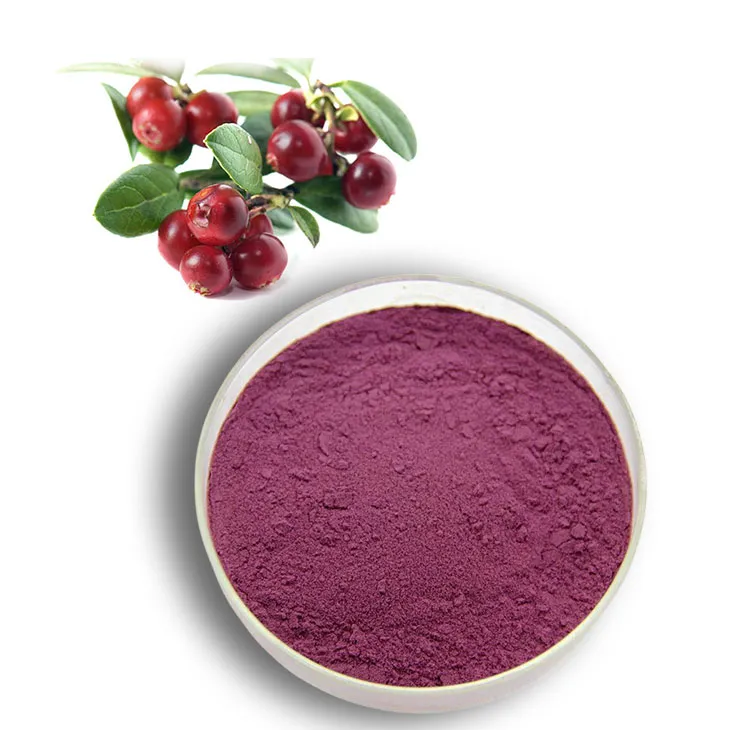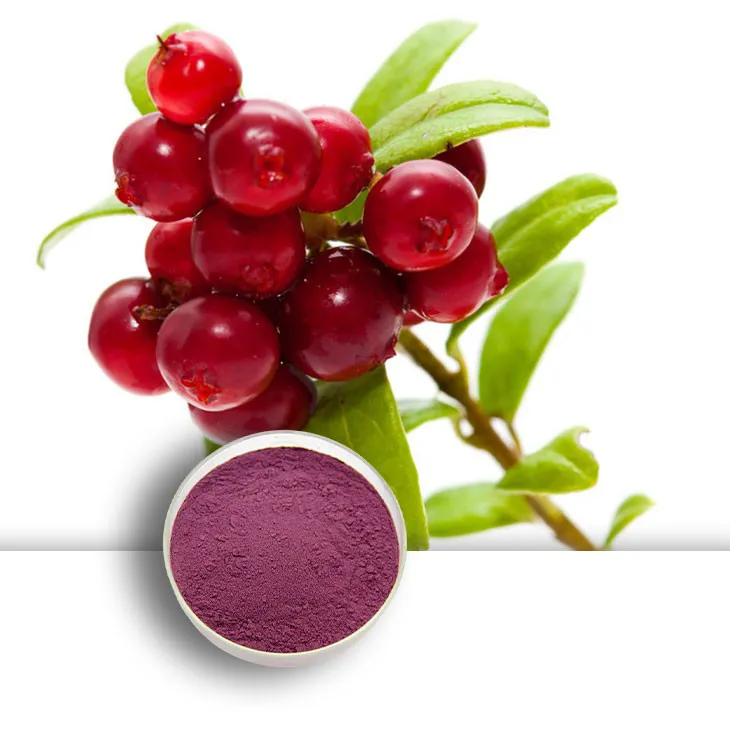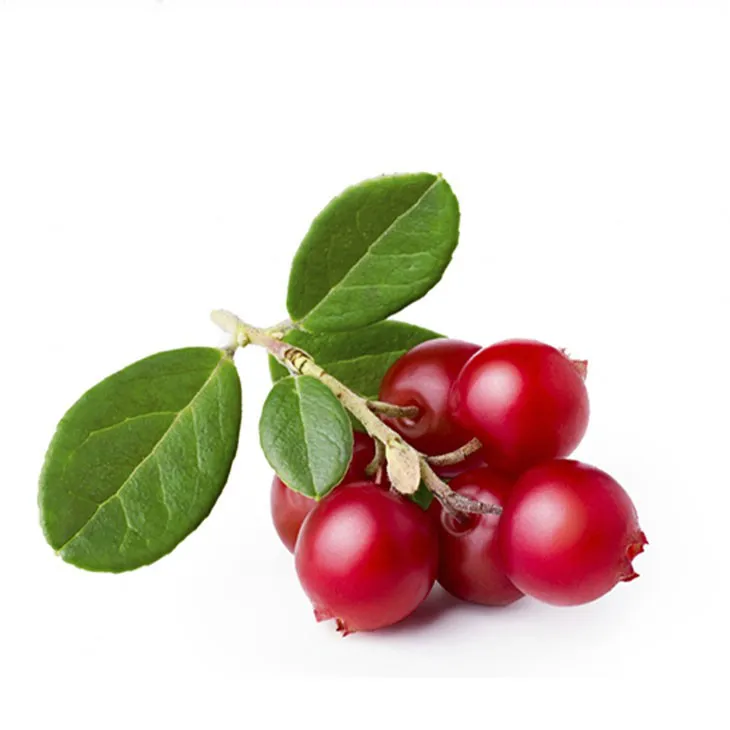- 0086-571-85302990
- sales@greenskybio.com
How to Extract Bilberry Extract from Plants?
2024-11-30

1. Introduction
The bilberry (Vaccinium myrtillus) is a small, dark - blue berry - bearing shrub that has been recognized for its numerous health benefits. Bilberry Extract is rich in anthocyanins, flavonoids, and other bioactive compounds, which are responsible for its antioxidant, anti - inflammatory, and vision - enhancing properties. Extracting Bilberry Extract from plants is a complex process that involves several steps and considerations. This article aims to provide a comprehensive guide on the various methods of extraction, starting from the selection of high - quality bilberry plants.

2. Selection of High - Quality Bilberry Plants
2.1. Species and Varieties
- There are different species within the Vaccinium genus, but Vaccinium myrtillus is the most common for Bilberry Extract production. However, within this species, there are also various varieties that may differ in their chemical composition.
- Selecting the appropriate variety is crucial as it can affect the yield and quality of the extract. For example, some varieties may have a higher content of anthocyanins, which are the main bioactive components of interest.
- The geographical location where the bilberry plants are grown plays a significant role. Plants grown in their native habitats, such as certain regions in Europe, may have better quality due to the ideal soil, climate, and altitude conditions.
- Soil type, pH, and nutrient content are important factors. Bilberry plants prefer acidic soils with a pH range of 4.0 - 5.5. Adequate levels of nutrients like nitrogen, phosphorus, and potassium are necessary for healthy plant growth and high - quality berry production.
- Climate conditions, including temperature, rainfall, and sunlight exposure, also influence the plant's development. Cooler climates with a sufficient amount of rainfall during the growing season are generally favorable for bilberry plants.
- The timing of the harvest is critical. Bilberries should be harvested at the peak of ripeness to ensure the highest concentration of bioactive compounds.
- Typically, this is when the berries are fully dark - blue in color. Harvesting too early may result in lower levels of anthocyanins and other beneficial substances, while harvesting too late may lead to over - ripeness and potential degradation of the compounds.

3. Solvent Extraction
3.1. Principle
Solvent extraction is one of the most common methods for obtaining bilberry extract. The principle behind this method is based on the solubility of the bioactive compounds in a particular solvent. The solvents are chosen such that they can dissolve the desired components from the bilberry plant material while leaving behind the unwanted substances, such as cellulose and other structural components.
3.2. Common Solvents- Ethanol: Ethanol is a widely used solvent for bilberry extraction. It has several advantages, including its relatively low toxicity, good solubility for anthocyanins and other flavonoids, and its ability to be easily removed from the extract through evaporation. Ethanol - water mixtures are often used, with different ratios depending on the specific requirements of the extraction.
- Methanol: Methanol can also be used as a solvent. However, it is more toxic than ethanol, which requires more careful handling. But it has a high solubility for many of the bioactive compounds in bilberry, making it an effective solvent for extraction in a laboratory or industrial setting where proper safety measures are in place.
- Acetone: Acetone is another solvent option. It has a relatively high solubility for bilberry components, but it is also flammable and has a strong odor. Therefore, special precautions are needed during the extraction process when using acetone.
- First, the bilberry plant material, which can be fresh berries or dried and powdered berries, is prepared. If using fresh berries, they are usually washed and dried gently to remove any dirt or debris.
- The plant material is then mixed with the selected solvent in a suitable container. The ratio of plant material to solvent can vary depending on the extraction efficiency desired. A common ratio might be 1:5 or 1:10 (plant material: solvent by weight).
- The mixture is then stirred or agitated for a specific period of time. This can range from a few hours to several days, depending on factors such as the nature of the solvent, the type of plant material, and the desired extraction yield. For example, when using ethanol - water mixtures, a stirring time of 2 - 4 hours may be sufficient for a preliminary extraction.
- After the extraction period, the mixture is filtered to separate the liquid extract (containing the dissolved bioactive compounds) from the solid residue (mostly the undissolved plant material). Filtration can be done using filter paper in a laboratory setting or more advanced filtration systems in an industrial scale.
- The solvent is then removed from the extract, usually through evaporation. This can be done under reduced pressure in a rotary evaporator in a laboratory or using large - scale evaporation equipment in an industrial plant. The resulting product is the bilberry extract, which may be further purified or processed depending on its intended use.
-
Advantages
- It is a relatively simple and well - established method. Laboratories and industries have extensive experience with solvent extraction techniques, making it easier to implement.
- There is a wide range of solvents available, allowing for flexibility in choosing the most suitable solvent based on the specific requirements of the extraction, such as solubility of the target compounds and safety considerations.
-
Disadvantages
- The use of solvents, especially those with higher toxicity like methanol, poses safety risks to operators and requires strict safety protocols. In addition, the solvents need to be removed completely from the final extract to ensure product safety.
- Some solvents may also extract unwanted substances along with the bioactive compounds, which may require additional purification steps. For example, some solvents may dissolve small amounts of waxes or lipids from the bilberry plant, which may need to be removed to obtain a pure extract.

4. Supercritical Fluid Extraction
4.1. Principle
Supercritical fluid extraction (SFE) is a more advanced extraction method. A supercritical fluid is a substance that is above its critical temperature and critical pressure, where it exhibits properties between those of a liquid and a gas. In the case of bilberry extraction, carbon dioxide (CO₂) is often used as the supercritical fluid. The supercritical CO₂ has a high diffusivity, low viscosity, and can be easily adjusted to have different solvating powers, which allows it to selectively extract the bioactive compounds from the bilberry plant material.
4.2. Equipment and Process- The extraction system consists of a high - pressure pump, a temperature - controlled extraction vessel, and a separation vessel. The bilberry plant material is placed in the extraction vessel.
- Carbon dioxide is pressurized and heated to its supercritical state and then pumped into the extraction vessel. The supercritical CO₂ penetrates the plant material and dissolves the bioactive compounds.
- The mixture of supercritical CO₂ and the dissolved compounds then flows into the separation vessel. Here, by changing the pressure and/or temperature, the CO₂ reverts to a gaseous state, and the extracted compounds are separated from the CO₂.
-
Advantages
- It is a "green" extraction method as carbon dioxide is non - toxic, non - flammable, and environmentally friendly. There is no solvent residue in the final extract, which is important for applications in the food and pharmaceutical industries.
- The extraction can be highly selective, allowing for the extraction of specific bioactive compounds with high purity. By adjusting the pressure and temperature, the solvating power of the supercritical CO₂ can be precisely controlled to target certain compounds in the bilberry plant.
-
Disadvantages
- The equipment for supercritical fluid extraction is expensive and requires high - pressure operation, which means higher initial investment and operating costs. This makes it less accessible for small - scale producers or laboratories with limited budgets.
- The extraction process is more complex compared to solvent extraction, requiring precise control of temperature, pressure, and flow rates. Any deviation from the optimal conditions may result in lower extraction yields or reduced selectivity.
5. Factors Affecting the Extraction Process
5.1. Temperature
Temperature plays a crucial role in both solvent extraction and supercritical fluid extraction. In solvent extraction, increasing the temperature can generally increase the solubility of the bioactive compounds in the solvent, which may lead to higher extraction yields. However, if the temperature is too high, it may also cause degradation of the compounds. For example, anthocyanins are sensitive to high temperatures and may lose their antioxidant activity if exposed to excessive heat.
In supercritical fluid extraction, temperature affects the density and solvating power of the supercritical fluid. Different bioactive compounds in bilberry may have different optimal extraction temperatures. For instance, some flavonoids may be more efficiently extracted at a slightly higher temperature, while other compounds may be more stable and better extracted at a lower temperature.
5.2. PressureIn supercritical fluid extraction, pressure is a key factor. Increasing the pressure can increase the density of the supercritical fluid, which in turn enhances its solvating power. This allows for more effective extraction of the bioactive compounds. However, very high pressures may also pose challenges in terms of equipment requirements and safety.
In solvent extraction, pressure may not be as critical as in SFE, but in some cases, such as when using a pressurized extraction system to speed up the extraction process, pressure can also have an impact on the extraction efficiency.
5.3. Extraction TimeThe extraction time is an important parameter in both extraction methods. In solvent extraction, longer extraction times may lead to higher yields as more of the bioactive compounds are dissolved in the solvent over time. However, after a certain point, the increase in yield may become negligible, and longer extraction times may also increase the risk of compound degradation or extraction of unwanted substances.
In supercritical fluid extraction, the extraction time also affects the yield. Longer extraction times can ensure more complete extraction of the target compounds, but it also requires more energy and may increase the operating costs of the process.
6. Conclusion
The extraction of bilberry extract from plants is a multi - faceted process that involves careful consideration of various factors. From the selection of high - quality bilberry plants to the choice of extraction method and the control of extraction conditions such as temperature, pressure, and extraction time, each step is crucial in obtaining a high - quality extract rich in bioactive compounds. Solvent extraction is a more traditional and widely used method, while supercritical fluid extraction offers a more environmentally friendly and selective alternative, albeit with higher costs and complexity. Understanding these processes and factors is essential for those interested in bilberry extract production, whether for the food, pharmaceutical, or nutraceutical industries.
FAQ:
Q1: What are the key steps in selecting high - quality bilberry plants for extraction?
When selecting high - quality bilberry plants for extraction, several factors need to be considered. Firstly, the maturity of the plants is crucial. Mature bilberry plants tend to have a higher concentration of the desired compounds. Secondly, the health of the plants matters. Plants free from diseases and pests are more likely to yield good - quality extract. Additionally, the geographical origin can also play a role. Bilberry plants grown in their native habitats or in regions with suitable environmental conditions may have better characteristics for extraction.
Q2: What is solvent extraction in bilberry extract production and what are its advantages?
Solvent extraction in bilberry extract production involves using a solvent (such as ethanol or methanol) to dissolve the active compounds from the bilberry plants. One of its main advantages is its relatively high efficiency in extracting a wide range of compounds. It is also a relatively simple and cost - effective method. Solvent extraction can be easily scaled up for large - scale production, and different solvents can be chosen depending on the specific compounds to be extracted and the properties desired in the final extract.
Q3: What are the disadvantages of supercritical fluid extraction in the context of bilberry extract?
Supercritical fluid extraction has some disadvantages when it comes to bilberry extract. Firstly, the equipment required for supercritical fluid extraction is more complex and expensive compared to some other methods. Secondly, the process needs precise control of parameters such as pressure and temperature, which can be technically challenging. Additionally, the extraction capacity may be relatively lower compared to solvent extraction in some cases, which might limit its use for large - scale, high - volume production.
Q4: How does temperature affect the bilberry extract extraction process?
Temperature has a significant impact on the bilberry extract extraction process. In general, an increase in temperature can enhance the solubility of the compounds in the solvent or supercritical fluid, which can lead to a higher extraction rate. However, if the temperature is too high, it may cause degradation of some of the active compounds in the bilberry. Therefore, finding the optimal temperature range is crucial for obtaining a high - quality extract with maximum yield of the desired compounds.
Q5: Why is extraction time an important factor in bilberry extract production?
Extraction time is an important factor in bilberry extract production. If the extraction time is too short, not all of the desired compounds may be fully extracted from the bilberry plants, resulting in a lower - quality extract with a reduced concentration of active ingredients. On the other hand, if the extraction time is too long, it may lead to over - extraction, which can introduce unwanted impurities or cause degradation of some of the compounds. Therefore, determining the appropriate extraction time is necessary to balance the yield and quality of the bilberry extract.
Related literature
- The Extraction and Analysis of Bioactive Compounds from Bilberry: A Review"
- "Optimization of Bilberry Extract Production: Techniques and Considerations"
- "Advances in Bilberry Extract Extraction: From Plant to Product"
- ▶ Hesperidin
- ▶ citrus bioflavonoids
- ▶ plant extract
- ▶ lycopene
- ▶ Diosmin
- ▶ Grape seed extract
- ▶ Sea buckthorn Juice Powder
- ▶ Beetroot powder
- ▶ Hops Extract
- ▶ Artichoke Extract
- ▶ Reishi mushroom extract
- ▶ Astaxanthin
- ▶ Green Tea Extract
- ▶ Curcumin Extract
- ▶ Horse Chestnut Extract
- ▶ Other Problems
- ▶ Boswellia Serrata Extract
- ▶ Resveratrol Extract
- ▶ Marigold Extract
- ▶ Grape Leaf Extract
- ▶ blog3
- ▶ blog4
-
Longan extract suppliers.
2024-11-30
-
Certified organic lemon extract.
2024-11-30
-
Wholesale Echinacea Extract Suppliers.
2024-11-30
-
100% Pure Organic L - Tyrosine
2024-11-30
-
100% Organic Purple Sweet Potato Extract.
2024-11-30
-
The best banana juice powder in 2024.
2024-11-30
-
Apricot powder supplier.
2024-11-30
-
Hops Extract
2024-11-30
-
Maitake Mushroom Extract
2024-11-30
-
Clove Powder
2024-11-30
-
Troxerutin
2024-11-30
-
Sea buckthorn Juice Powder
2024-11-30
-
Lavender Extract
2024-11-30
-
melatonin extract
2024-11-30
-
Carrageenan Extract Powder
2024-11-30
-
Rose Hip Extract
2024-11-30
-
Dan Shen Root Extract/Salvia Root Extract
2024-11-30





















